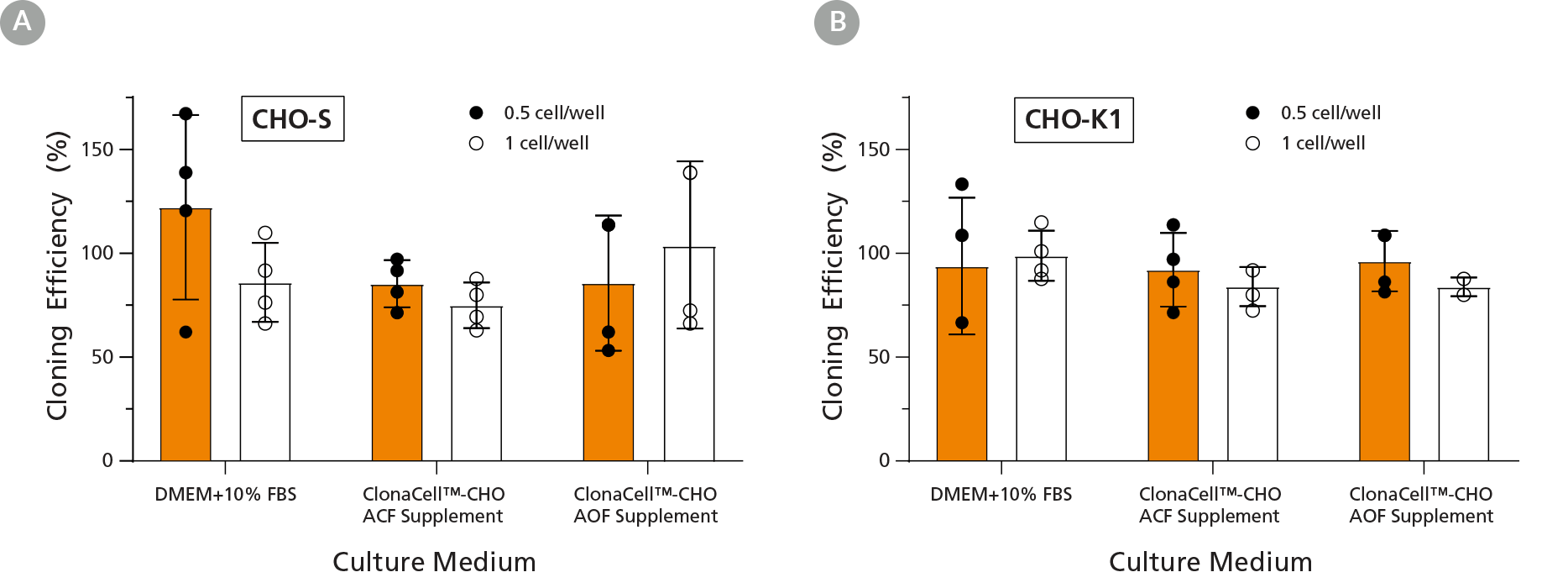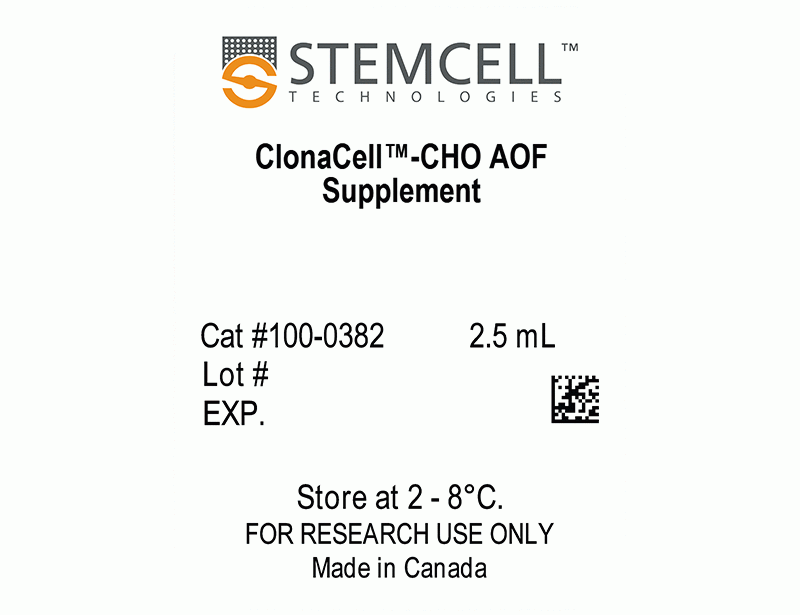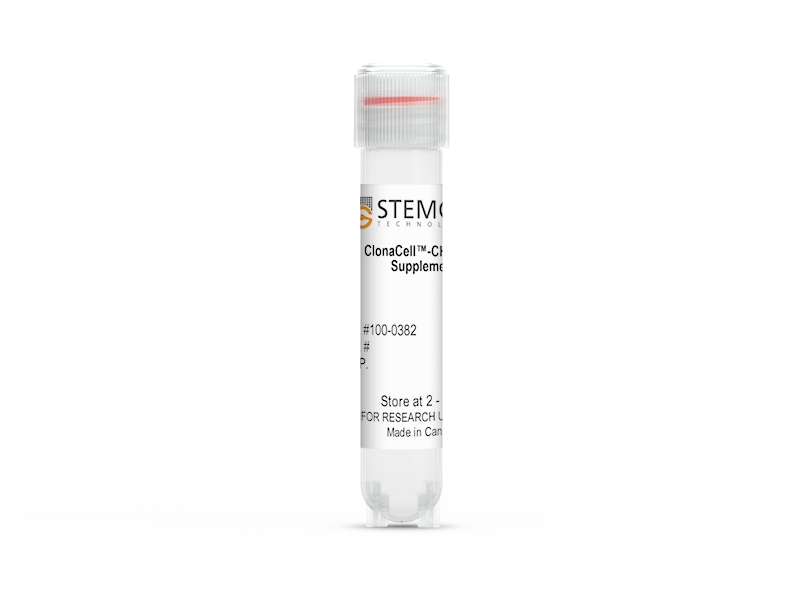ClonaCell™-CHO AOF Supplement
Formulated without phenol red, this supplement offers precipitate-free culture for improved imaging clarity and visualization of clonality, compared to ClonaCell™-CHO ACF Supplement (Catalog #03820). This animal origin-free (AOF) supplement is formulated with no animal-derived raw materials to the secondary level of manufacturing. It contains recombinant proteins and chemically defined components and is free of serum, hydrolysates, L-glutamine, or selection agents.
Use this 40X supplement with a variety of base media suitable for CHO cell culture, including protein-free ClonaCell™-CHO CD Liquid Medium (Catalog #03817) or semi-solid ClonaCell™-CHO CD Medium (Catalog #03815).
Explore liquid and semi-solid media for efficient cell cloning and cell line generation in the ClonaCell™ brand page.
Learn more about how we define our culture media and supplements, including AOF media.
• Compatible with a variety of commercially available liquid or semi-solid protein-free media
• Allows the user to maintain existing upstream and downstream cell culture processes
| Document Type | 产品名称 | Catalog # | Lot # | 语言 |
|---|---|---|---|---|
| Product Information Sheet | ClonaCell™-CHO AOF Supplement | 100-0382 | All | English |
| Safety Data Sheet | ClonaCell™-CHO AOF Supplement | 100-0382 | All | English |
Data

Figure 1. Cloning Efficiencies for Subcloned CHO-S and CHO-K1 Cells
CHO-S (A) and CHO-K1 (B) cells were subcloned by limiting dilution in DMEM + 10% FBS, or ClonaCell™-CHO CD Liquid Medium containing either ClonaCell™-CHO ACF Supplement or ClonaCell™-CHO AOF Supplement; all conditions contained 6 - 8 mM L-glutamine. Individual wells of 96-well plates were seeded with an average of 0.5 or 1 cell per well in 200 μL culture medium. After incubation for 14 days (37°C, 5% CO2) the plates were examined under a microscope and assessed for growth, with wells containing >100 cells considered positive for outgrowth. The cloning efficiency was estimated by Poisson statistics using the ELDA method described by Hu & Smith (2009). Data are shown as mean ± 1 SD for n = 4 independent experiments.


